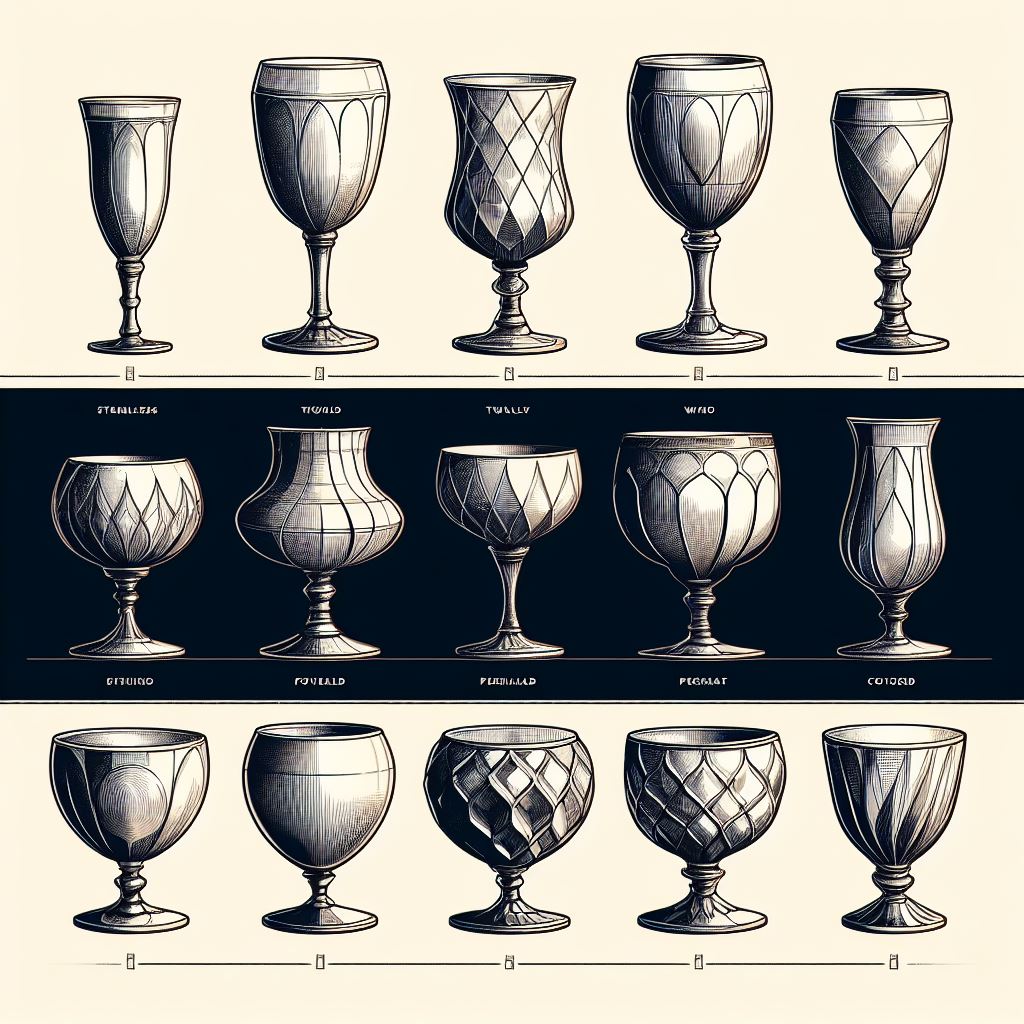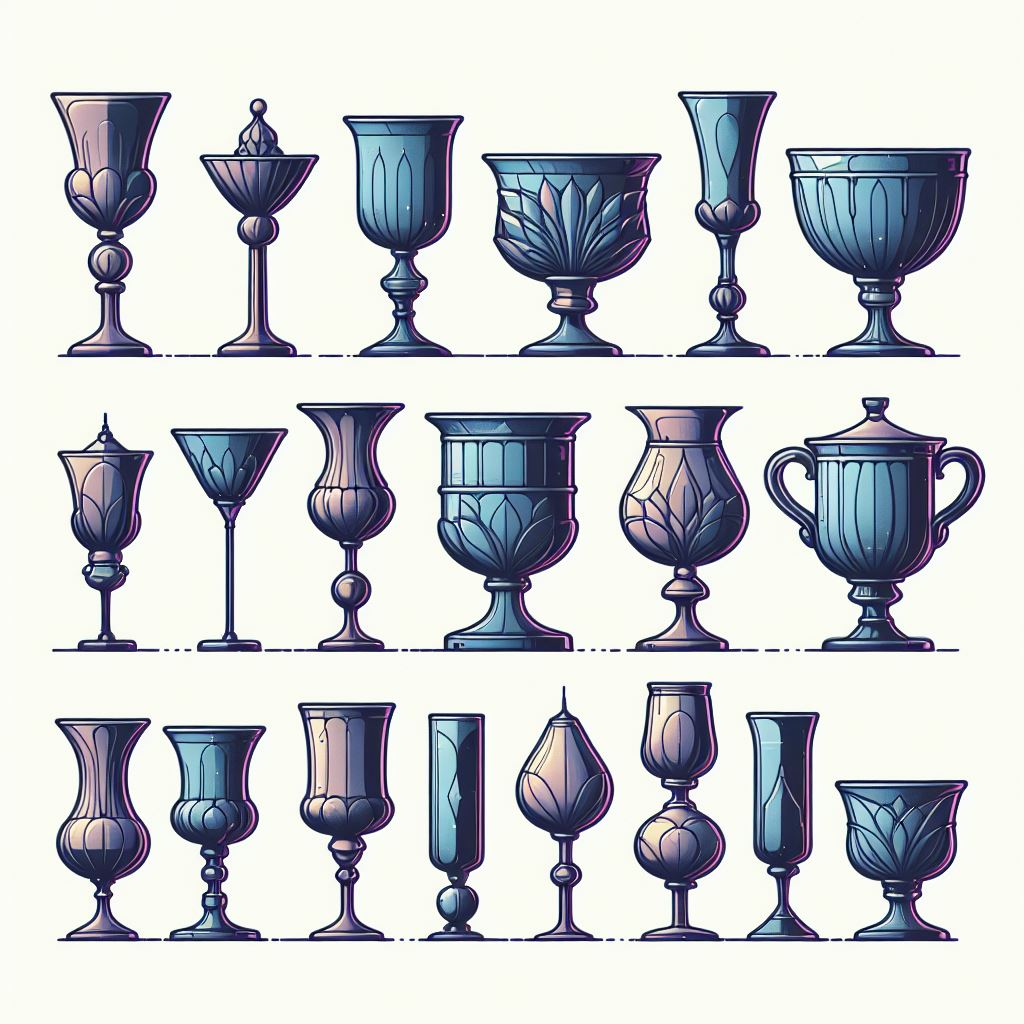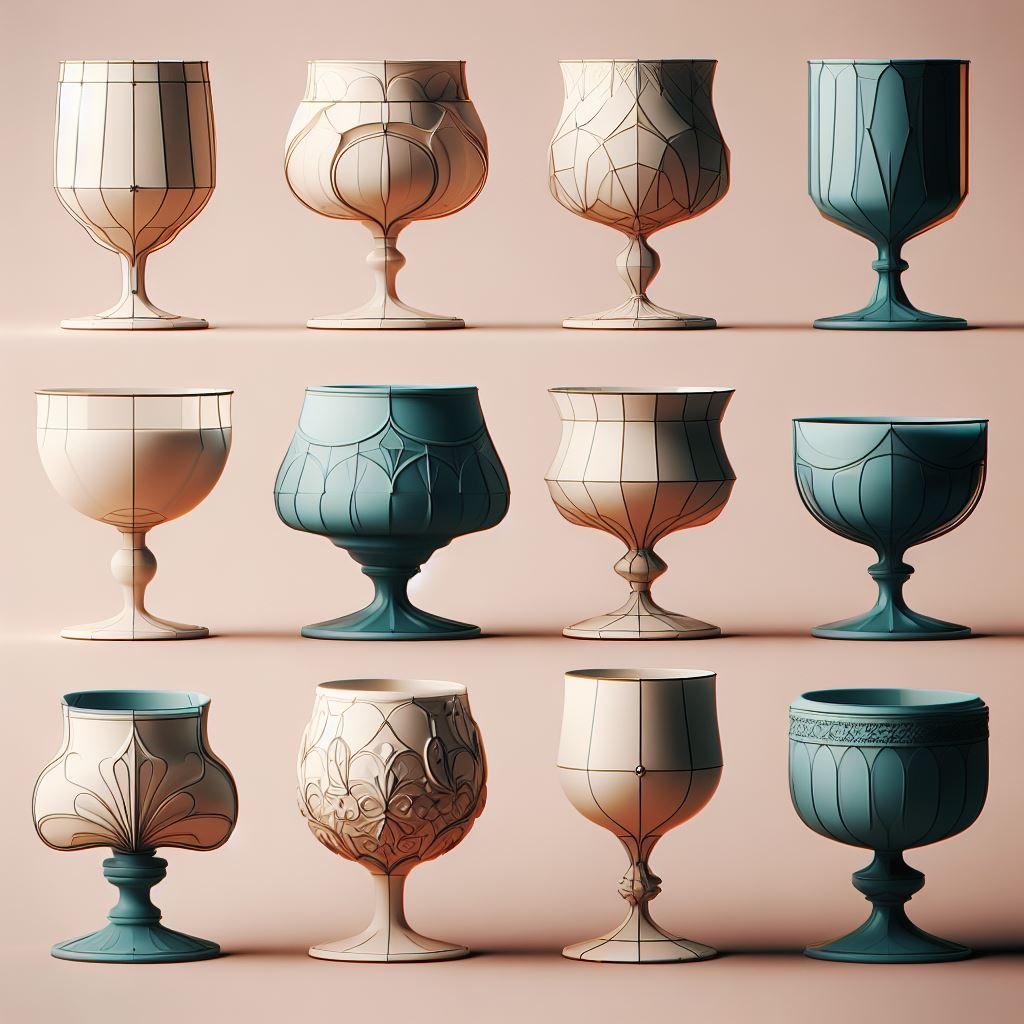When it comes to the world of goblets, the richness lies not only in their diverse uses but also in their intricate geometry. Each goblet’s design and structure tell a story that intersects at the junction of aesthetics and functionality. The physical shape or structure of a goblet, or what we call its form and structure, plays a crucial role in defining its character, use, and the drinking experience it provides. As part of our exploration into the realm of goblets, let’s delve deeper into the four primary categories of goblets distinguished by form and structure: Stemless Goblets, Two-Handled Goblets, Pedestal Goblets, and Covered Goblets.
Stemless Goblets: The Art of Minimalism
The evolution of stemless goblets signifies a departure from traditional goblet design, exchanging the conventional stem for a more relaxed, modern aesthetic. An example is the trend-setting stemless wine goblet, popular for its ergonomic shape and casual appeal. This form is a result of meticulous design process, where balance, volume, and tactile feel are key considerations.
Stemless goblets not only bring a fresh and casual look to your table but also promise enhanced stability. With their lower center of gravity, they are less likely to be knocked over, a practical consideration for lively gatherings or outdoor events. However, it’s important to note that their stemless nature might not keep your drink cool as long as stemmed goblets would, due to the heat transfer from the hand holding the glass.
The form of these goblets, driven by simplicity and functionality, impacts the drinking experience significantly, offering a feel closer to conventional mugs, while still retaining the sophistication of goblets. Their design and geometric profile serve as a testament to the adage, ‘less is more.’

Two-Handled Goblets: Unity Encapsulated
Also known as ‘loving cups,’ two-handled goblets are a symbol of unity, companionship, and shared experiences. An illustration of this would be the traditional Celtic Quaich, characterized by its shallow, wide bowl and two distinctive handles, embodying communal drinking practices of the culture.
The skill of the artisans becomes apparent when crafting a two-handled goblet. The challenge lies in ensuring the perfect symmetry between the two handles for an optimal balance, making the crafting process a painstaking task.
With a handle on each side, they are designed for shared use, embodying mutual commitment. Often seen in wedding ceremonies or used as trophies, these goblets hold a rich historical and symbolic value. The added handles not only change the goblet’s aesthetics but also its use, adding a communal aspect to the drinking experience. In essence, the dual-handled structure reinforces the symbolic function these goblets serve.
Pedestal Goblets: The Pinnacle of Elegance
Elevating elegance to new heights, pedestal goblets are the epitome of sophisticated design. An exemplar of this type is the classic champagne goblet, known for its tall stem and fluted bowl, a geometry which helps maintain the beverage’s carbonation and temperature while displaying its appealing effervescence.
The design process behind these goblets demands expert knowledge of geometry to ensure the goblet’s balance and stability. The pedestal, being a significant feature, adds an extra layer of complexity to the manufacturing process.
Their prominent feature, a high base or pedestal, creates a striking silhouette that sets them apart from other goblet types. This design feature does more than just enhance aesthetics; it makes them ideal for showcasing beverages, especially in formal settings where presentation matters. The pedestal adds a vertical dimension to the goblet, transforming it into a centerpiece of the table setting while still serving its primary function – to hold and present beverages.
Covered Goblets: An Allure of Practicality
The uniqueness of covered goblets lies in their feature of a lid or cover, offering a practical function along with a distinctive look. This attribute can be observed in traditional German beer steins, designed to protect the beverage from flies during the Black Plague era.
Covered goblets pose a unique challenge to artisans – they require not just designing a container but also a matching cover that fits perfectly, ensuring usability without compromising on aesthetics.
Whether you aim to keep your drink warm, preserve its aroma, or shield it from dust or insects, covered goblets meet these needs. They are often used in serving hot beverages like mulled wine or spiced cider, especially in cultures where such drinks are common. The addition of the lid not only alters the goblet’s physical form but also broadens its functionality, demonstrating a perfect marriage of form and function.
Other Goblet Forms: Chalice Goblets
Though not as common as the above categories, chalice goblets are worth mentioning. These goblets, which are essentially a large cup or bowl on a stem, often exhibit elaborate designs and have a historical and religious significance. A prominent example of this is the Holy Grail, traditionally thought to be used in the Last Supper.
Typically made of precious metals, they are often used in ceremonial contexts, such as the Christian Eucharist. The form of these goblets aligns with their sacred function, reinforcing the symbiosis of form and structure.
Comparative Analysis: The Geometry of Choice
While each goblet type has its own charm and functionality, the choice of a goblet often depends on the context and the beverage to be served. Stemless goblets, for instance, might be chosen for their casual appeal in an informal gathering, while pedestal goblets might be preferred for their elegance in a formal dinner. In contrast, two-handled goblets might be preferred in communal drinking scenarios for their symbolism of unity and shared experiences, while covered goblets could be chosen to protect the beverage in outdoor settings or to serve hot drinks.

Form and structure in goblets create an intriguing blend of aesthetics and utility. Each category, from stemless goblets to covered goblets and beyond, presents a different face of goblet geometry. These goblets, with their varied designs and structural elements, illustrate how form can meet function in the most elegant and practical ways, shaping our drinking experiences while bringing a unique style to our tables.
If you’ve enjoyed exploring the captivating world of goblet geometry, you may also be interested in delving further into other facets of goblet lore. The Goblet Compendium offers an extensive exploration into various aspects, including materials used, historical significance, design attributes, and many more. Enhance your knowledge and appreciation of these fascinating vessels, from their substance and style to their journey through time and taste. Each chapter unveils another layer of the intricate world of goblets, reaffirming their role not just as drinking vessels, but as symbols of culture, history, and art.
